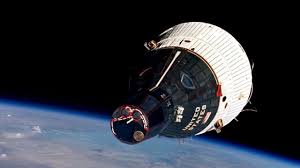The space race of the 1960s marked a period of unprecedented innovation and ambition. Among the many historic missions of this era, Gemini 3 stands out as a critical milestone in NASA’s efforts to explore space and develop technologies that would eventually take astronauts to the Moon. This mission was the first manned flight of the Gemini program, designed to test spacecraft systems, maneuvers, and human endurance in orbit. Gemini 3 not only showcased America’s growing capabilities in space exploration but also set the stage for future lunar missions, including the famed Apollo program.
This article explores the Gemini 3 mission in detail—its objectives, crew, spacecraft, achievements, and lasting legacy in the annals of space history.
1. Introduction to Gemini 3
1.1 The Genesis of the Gemini Program
Following the success of the Mercury program, NASA recognized the need for a more advanced spacecraft capable of longer missions, orbital maneuvers, and spacewalks. The Gemini program, NASA’s second human spaceflight initiative, aimed to:
- Test spacecraft systems for long-duration missions
- Develop orbital rendezvous and docking techniques
- Study astronaut performance in microgravity
Gemini 3 was the first manned mission of this ambitious program, marking a crucial step in America’s journey to the Moon.
1.2 The Significance of Gemini 3
Gemini 3 was not just a test flight—it was a demonstration of human ingenuity and technological progress. Its success was vital for validating spacecraft design, crew operations, and orbital maneuvering capabilities. The mission also symbolized America’s determination to catch up with and surpass Soviet achievements in space.
2. Crew and Mission Personnel
2.1 Astronauts of Gemini 3
The Gemini 3 mission featured a two-man crew:
- Gus Grissom (Commander): A veteran astronaut from the Mercury program, Grissom was known for his technical expertise and calm demeanor under pressure.
- John Young (Pilot): Making his first spaceflight, Young would later become one of NASA’s most accomplished astronauts, flying multiple Gemini, Apollo, and Space Shuttle missions.
Their combined experience, courage, and skill were essential for the success of this pioneering mission.
2.2 Ground Support and Mission Control
The Gemini 3 flight was supported by a large team of engineers, flight controllers, and support staff at NASA’s Mission Control in Houston. Their role included monitoring spacecraft systems, communicating with the crew, and coordinating contingency procedures to ensure safety.
3. The Gemini 3 Spacecraft
3.1 Design and Features
The Gemini 3 spacecraft was an innovative two-person capsule equipped with:
- Environmental controls to support life in orbit
- Navigation and control systems for orbital maneuvers
- Communication systems for constant contact with Mission Control
- Safety systems including an ejection seat for launch emergencies
This spacecraft was a marked improvement over Mercury capsules, designed to support longer missions and more complex operations.
3.2 Innovations in Gemini 3
Unlike previous capsules, Gemini 3 introduced features such as:
- Manual control for orbital maneuvering
- More advanced instrumentation for crew monitoring
- Improved spacecraft life-support systems
- Compact design enabling two astronauts to work comfortably in orbit
These innovations provided critical data for subsequent missions in the Gemini program.
4. Mission Objectives of Gemini 3
4.1 Testing Spacecraft Maneuverability
A primary goal of Gemini 3 was to test spacecraft maneuvering capabilities in orbit. This included:
- Performing orbital adjustments
- Assessing the effectiveness of thrusters
- Evaluating astronaut handling of manual controls
These tests laid the groundwork for rendezvous and docking procedures that would later be crucial for Apollo missions.
4.2 Assessing Human Performance in Space
Another key objective was to study how astronauts responded to microgravity over several orbits. This included:
- Monitoring physical health
- Evaluating fatigue and alertness
- Testing coordination and task performance
4.3 Verifying Life-Support Systems
Gemini 3 aimed to confirm the reliability of environmental controls, including oxygen supply, temperature regulation, and waste management systems—vital for longer missions.
5. The Flight Profile of Gemini 3
5.1 Launch
Gemini 3 was launched on March 23, 1965, using the Titan II GLV rocket from Cape Kennedy, Florida. The launch was successful, placing the spacecraft into a stable low Earth orbit with an altitude of approximately 161 kilometers (100 miles).
5.2 Orbital Maneuvers
During its flight, Gemini 3 completed three orbits of the Earth, testing the spacecraft’s maneuvering systems. Astronauts Grissom and Young executed manual maneuvers, successfully demonstrating that astronauts could control their spacecraft in orbit—a vital capability for future rendezvous and docking missions.
5.3 Re-entry and Landing
After nearly five hours in space, Gemini 3 re-entered the Earth’s atmosphere and splashed down in the Atlantic Ocean. Recovery teams quickly retrieved the astronauts and spacecraft, marking a safe and successful completion of the mission.
6. Achievements and Contributions of Gemini 3
6.1 Validating Manned Spacecraft Capabilities
Gemini 3 confirmed that a two-person spacecraft could operate effectively in orbit, with manual control for navigation and successful life-support systems.
6.2 Demonstrating Orbital Maneuvering
The mission proved that astronauts could perform controlled orbital maneuvers—a key requirement for docking with other spacecraft, which was essential for the Apollo lunar program.
6.3 Building Astronaut Experience
Both Grissom and Young gained critical experience in handling spacecraft systems, which would influence training and procedures for subsequent missions.
6.4 Public and International Impact
Gemini 3 demonstrated U.S. capabilities in space exploration, bolstering national pride and sending a message to international competitors during the space race.
7. Challenges and Lessons Learned
7.1 Handling Unplanned Events
Even with meticulous planning, astronauts faced unexpected challenges in orbit. The mission highlighted the importance of redundancy, crew coordination, and real-time problem solving.
7.2 Enhancing Training Programs
Data from Gemini 3 informed improvements in astronaut training, particularly in manual control of spacecraft and emergency procedures.
7.3 Technical Adjustments for Future Missions
The flight revealed minor technical issues in the spacecraft that were corrected in subsequent Gemini missions, ensuring continued safety and mission success.
8. Legacy of Gemini 3
8.1 Paving the Way for Apollo Missions
The success of Gemini 3 directly contributed to the planning and execution of Apollo missions. Techniques tested during this flight, such as orbital maneuvering and manual control, were crucial for lunar rendezvous operations.
8.2 Advancing Spaceflight Technology
Gemini 3 showcased the effectiveness of two-person spacecraft, influencing spacecraft design for decades and inspiring innovations in life-support systems, navigation, and spacecraft control.
8.3 Inspiring Future Generations
The mission captured the imagination of the public and inspired countless future scientists, engineers, and astronauts. Its achievements remain a milestone in the history of human spaceflight.
9. Fun Facts About Gemini 3
- Gemini 3 was nicknamed “Molly Brown” by Gus Grissom as a humorous reference to the Titanic survivor, showing astronauts’ lighter side during missions.
- John Young, the pilot, would go on to command the first Space Shuttle mission in 1981.
- The flight lasted only 4 hours and 52 minutes, yet it accomplished multiple mission objectives that were critical for the future of space exploration.
Conclusion
Gemini 3 was more than just a test flight; it was a historic milestone that demonstrated America’s capability to operate manned spacecraft safely in orbit. From validating orbital maneuvers to testing life-support systems and astronaut performance, the mission laid the groundwork for more ambitious spaceflights, including lunar landings. The success of Gemini 3 showcased the skill and courage of astronauts Gus Grissom and John Young, the expertise of NASA engineers, and the ingenuity of the American space program during the space race era.
Even today, Gemini 3 is remembered as a pivotal moment in human space exploration—a mission that proved humans could operate, control, and succeed in the challenging environment of low Earth orbit. Its legacy continues to inspire astronauts and space enthusiasts around the world.





